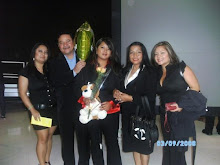One learning experience that was most effective for me as a student was a clinical laboratory course that I attended. One particular module comes to mind. We had received prerequisite training in the use of the microscope and blood staining techniques as well as microscope glass slide preparation The objective was to perform a white blood cell differential (WBC w/ diff) using the appropriate equipment, methods, stains etc… In order to perform this procedure the learner must first know how to visually differentiate between the different types of white blood cells according to various physical features and staining characteristics. We’ll refer to this as the sub-objective.
We had already received instruction on cell characteristics using color photographs in our textbooks but the cells looked much different when viewed through the microscope.
Our instructor was aware of this so he used a slide projector to display large images or pictures of each type WBC noting cell size, staining characteristic, presence or absence of granules within the cytoplasm, and cell nucleus characteristics. He repeated this process using several dozen images. We then took turns going up to the screen and identifying the cell characteristics in front of the class. Afterwards, we were tasked with using the microscope for cell identification. This lesson took place in 1973. Today I teach this same module at a private college in Texas.
This was a great learning experience for me. The instructor remained focused on the main sub-objective throughout the lesson. He maintained consistency by using visual and auditory sensory input for delivering relevant information without the use of text information that may have added to the cognitive load already processing the visual and auditory data.
The sequence of each part of the lesson was progressive starting with an overview of the lesson objective as well as the rationale for his instructional method. (He had asked us to close all books, not to write down notes, and to pay full attention to his instruction). He used appropriate pacing by making very specific observations to each visual display as well as using cues that guided the learner to the next step. He reduced the extraneous cognitive load by using the same criteria for identifying each cell presented on the screen. The intrinsic cognitive load for learning each type cell remained consistent.
Ref: Morrison, G. R., Ross, S. M., & Kemp, J. E. (2007). Designing effective instruction (5th ed.). San Francisco: John Wiley and Sons, Inc.
Friday, April 2, 2010
Subscribe to:
Posts (Atom)



